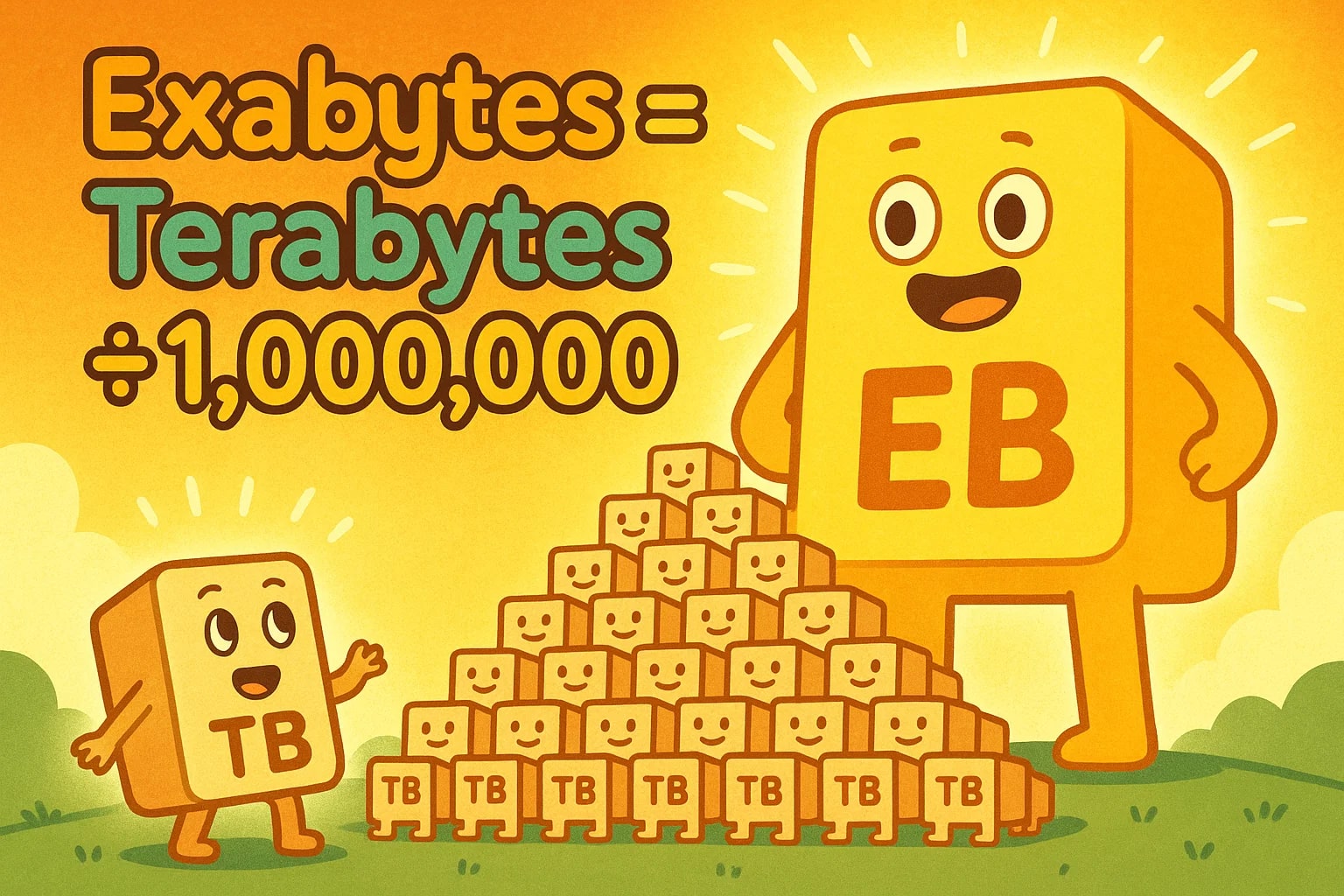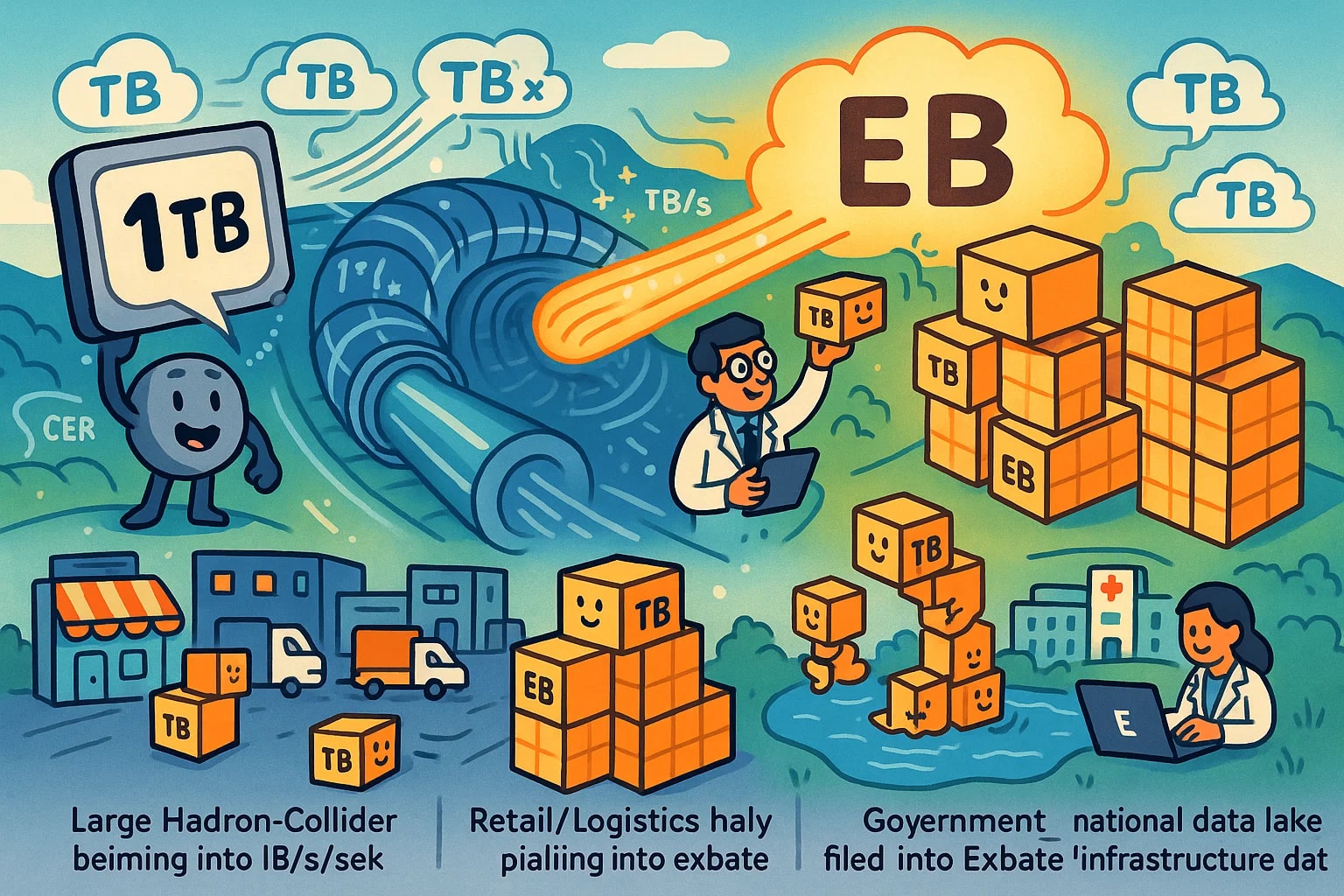terabyte to exabyte – How to convert TB to EB
In today’s data-driven world, it’s not uncommon to hear about terabytes being stored, transferred, or processed — whether it’s your laptop’s capacity or the size of a weekly backup. But as we scale into cloud computing, artificial intelligence, and scientific simulation, exabytes are becoming the language of massive data systems. If you’re measuring in terabytes (TB) but need to scale up to exabytes (EB), converting between the two helps you align your numbers with modern infrastructure.
Here’s how to do it — plus why this conversion is more relevant than ever in the age of big data.

What is a terabyte (TB)?
A terabyte is a unit of digital storage equal to 1,000,000,000,000 bytes — that’s 1 trillion bytes using the standard decimal system. Terabytes are most commonly used in:
-
Personal computers and SSD storage
-
High-resolution media libraries
-
Large application installations
-
Local server backups
-
Data transfer logs in mid-size organizations
One terabyte can store about 250,000 high-quality photos, 1,000 hours of music, or 500 hours of standard-definition video. It’s a powerful unit — but increasingly a starting point for larger systems.
What is an exabyte (EB)?
An exabyte equals 1,000,000,000,000,000,000 bytes — 1 quintillion bytes, or 1 million terabytes. It’s one of the largest data units used in computing today and is found in:
-
Global cloud storage infrastructures
-
National data archives
-
Scientific supercomputing (e.g., genomics, weather modeling)
-
Data centers serving platforms with billions of users
If a terabyte is a digital lake, an exabyte is the ocean — and we’re already navigating it. Companies like Google, Amazon, and Microsoft routinely handle multiple exabytes of data across their services.
How to convert terabyte to exabyte
The conversion is based on a simple scale:
1 exabyte = 1,000,000 terabytes
So the formula becomes:
exabytes = terabytes ÷ 1,000,000
You can also express it as:
exabytes = terabytes × 0.000001
You’re managing 2,500,000 terabytes of distributed storage. Converted to exabytes:
2,500,000 ÷ 1,000,000 = 2.5 EB
A digital preservation initiative has archived 780,000 TB of historical data:
780,000 ÷ 1,000,000 = 0.78 EB
A streaming platform processes 1,200,000 TB of analytics data every month:
1,200,000 × 0.000001 = 1.2 EB
Need faster conversions? Use our Data Storage Converter or check out the full Conversion tools section for a complete set of digital unit calculators.
Did you know?
-
The entire printed collection of the U.S. Library of Congress is estimated to be around 10 TB — which fits into just 0.00001 EB.
-
By 2025, the world is expected to generate over 180 zettabytes of data — that’s 180 million exabytes.
-
Leading cloud platforms like AWS and Google Cloud store multiple exabytes of data across global server farms.
-
Modern genomics projects — like whole human genome sequencing — generate petabytes and exabytes of data across global labs.
-
In streaming, companies like Netflix or YouTube deliver exabyte-level traffic per month — converted from billions of hours of user activity.
Scaling into exabyte territory – where terabytes just aren't enough
It wasn’t long ago that 1 TB hard drives were considered massive. But now, thanks to 4K video, real-time analytics, autonomous vehicle systems, and large-scale sensor networks, the conversation has moved to exabytes.
When CERN’s Large Hadron Collider runs a single experiment, the detectors can generate hundreds of terabytes per second of raw data. Not all of it is stored — but over time, these scientific institutions easily accumulate exabytes of results, simulations, and logs.
In business, retail and logistics giants process terabytes every hour — scaling into exabytes monthly. Even governments are investing in national data lakes, storing exabyte-level volumes of healthcare, security, and infrastructure data.
For any organization scaling beyond localized servers, the shift from terabyte to exabyte isn’t theoretical — it’s the roadmap.

Divide by 1,000,000 — and think big
The formula is simple:
exabytes = terabytes ÷ 1,000,000
But the scale is anything but. Use this conversion to plan infrastructure, size data projects, or benchmark against the highest levels of global data systems.
For instant conversions, go to our Data Storage Converter. And if you're exploring more unit conversions, check out all our Conversion tools to keep every byte — or exabyte — under control.

